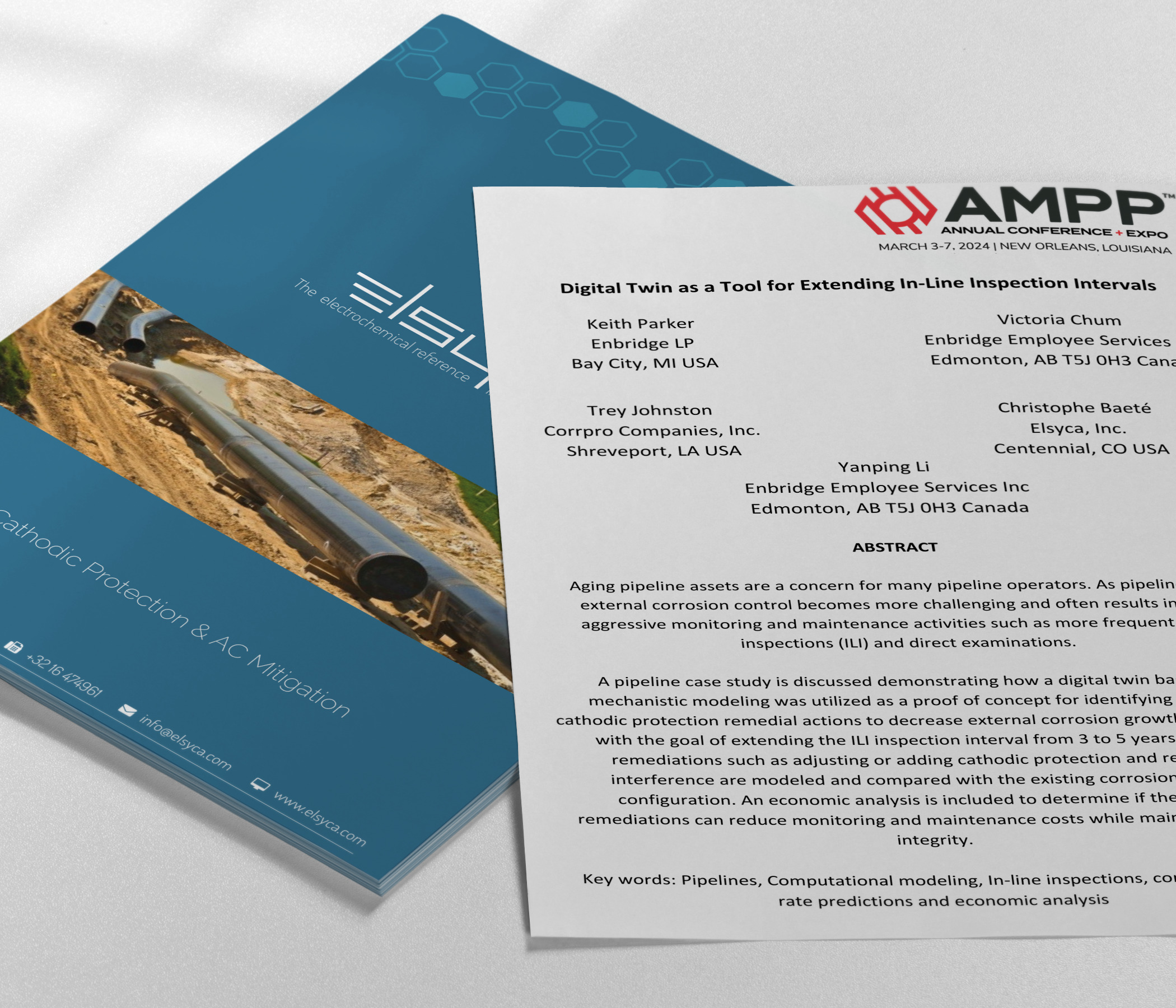
Digital Twin as a Tool for Extending In-Line Inspection Intervals (AMPP 2024)
AMPP 2024 Conference Paper

Digital Twin as a Tool for Extending In-Line Inspection Intervals
Keith Parker, Yanping Li, Victoria Chum, Enbridge Employee Services Inc.; Christophe Baete, Elsyca NV.; Trey Johnston, Corrpro Companies, Inc.
Paper presented at the AMPP Annual Conference + Expo, New Orleans LA, USA, March 2024.
Abstract
Aging pipeline assets are a concern for many pipeline operators. As pipelines age, external corrosion control becomes more challenging and often results in more aggressive monitoring and maintenance activities such as more frequent in-line inspections (ILI) and direct examinations.
A pipeline case study is discussed demonstrating how a digital twin based on mechanistic modeling was utilized as a proof of concept for identifying possible cathodic protection remedial actions to decrease external corrosion growth rates (CGR) with the goal of extending the ILI inspection interval from 3 to 5 years. Various remediations such as adjusting or adding cathodic protection and resolving interference are modeled and compared with the existing corrosion control configuration. An economic analysis is included to determine if theoretical remediations can reduce monitoring and maintenance costs while maintaining asset integrity.
Introduction
With the advancements of computer power, digital twins become an attractive method for computing the behavior of real-world assets. A digital twin is a computer model that is fed with field data from discrete measurement locations or remote monitoring sensors with the aim to mimic the real-world condition of the asset. Recently a digital twin concept was introduced at Enbridge pipelines on a large portion of the pipeline network. Field data from the annual surveys and remote monitoring devices in rectifiers is utilized for updating the model for the cathodic protection (CP) condition monitoring. The rectifier output is imposed in the digital twin based on mechanistic models which compute the ON/IR-free potential and current distribution along the pipeline with a resolution at joint level. From the soil properties and current density distribution, the corrosion rate is computed for each In-Line inspection (ILI) feature observed during the latest ILI run.
Digital twin models are applied to better understand the corrosion risks on the pipeline, to validate the performance of the corrosion mitigative measures and to optimize the corrosion maintenance program by simulating different options for improving the CP system.
